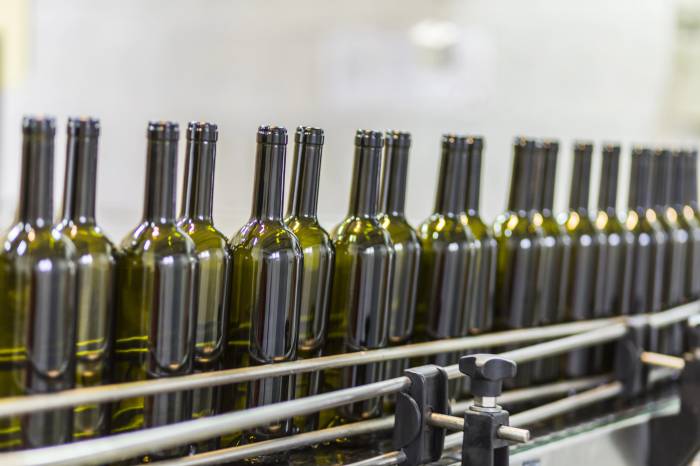Global Wine Imports Hit €35.58 Billion as Premiumization Offsets 2.3% Drop in Volume
North America and Asia drive value growth while Europe faces shifting demand and tariff pressures, customs data show
2025-10-16

The global wine import market showed signs of both resilience and volatility in the 12 months ending June 2025, according to customs data analyzed by the Interprofessional Organization of Spanish Wine (OIVE). The total value of wine imports worldwide reached €35.58 billion, a slight increase of 0.4% compared to the previous year. However, this annual growth masks significant fluctuations within the period, as a strong second half of 2024 offset a weaker start to 2025. The first six months of 2025 saw declines of 2.3% in value and 3.7% in volume, highlighting the market’s sensitivity to economic and policy changes.
Total import volume for the year dropped by 2.3% to 9.66 billion liters. Despite this contraction, the average price per liter rose by 2.7% to €3.68. This increase in average price reflects a broader shift toward premium wines and is also influenced by inflationary pressures throughout the supply chain.
Breaking down the market by product category reveals distinct trends. Non-sparkling packaged wine remains the largest segment, accounting for most of the global trade value. In the year ending June 2025, imports of this category reached €23.70 billion, up 0.4%, while volume fell by 2.3% to 4.90 billion liters. The average price per liter increased by 2.8% to €4.83, helping to stabilize overall value despite lower volumes.
Sparkling wine stood out as the only category to achieve volume growth. The value of sparkling wine imports was stable at €8.52 billion, a marginal decrease of 0.1%. Volume increased by 0.5% to 1.08 billion liters, while the average price dipped slightly by 0.7% to €7.93 per liter. The United States played a key role in this segment’s performance, with import value and volume both rising sharply in early 2025 as importers moved to stockpile ahead of anticipated EU tariffs.
Bulk wine, shipped in containers over 10 liters, saw its volume fall by 2.1% to 3.25 billion liters. However, the value of bulk wine imports grew by 3.4% to €2.56 billion, driven by a 5.6% increase in average price to €0.79 per liter. This price growth was most pronounced in higher-cost markets such as the UK and USA, where demand for quality bulk wine for local bottling remains strong.
Other categories faced more challenging conditions. Bag-in-Box (BiB) wine imports declined by 3.0% in value to €673 million and by 5.5% in volume to 346.6 million liters. The Must category experienced a sharp drop in both value and volume, with imports falling by 6.4% to €121.5 million and by 20.2% to 85.2 million liters, respectively. The steep decline in Must volumes led to a significant increase in average price.
Geographically, North America emerged as a key driver of value growth. The United States led all countries in import value, with spending up 6.4% to €6.47 billion. This surge was largely attributed to stockpiling by importers ahead of new EU tariffs rather than underlying consumer demand. U.S. import volume rose modestly by 0.7% to 1.24 billion liters, making it the second-largest importer by volume after Germany.
Canada also posted solid results, with import value up 0.8% to €1.88 billion and volume up 5.6% to 387 million liters, reinforcing its position as the fourth-largest market by value.
In Europe, results were mixed. The United Kingdom, the world’s second-largest importer by value, saw spending fall by 1.7% to €4.52 billion and volume drop by 1.3% to 1.23 billion liters. Germany remained the top importer by volume at 1.28 billion liters, despite a significant decline of 5.9%. German import value was relatively stable at €2.59 billion, down just 0.2%. The Netherlands recorded the most dramatic shift, with import value soaring by 23.7% to €1.47 billion even as volume fell by 12.5% to 368 million liters, signaling a rapid move toward premium wines.
Asian markets showed stability and growth. Japan maintained its position as the fifth-largest importer by value, with spending up 0.7% to €1.55 billion and volume up 2.4% to 239 million liters. China’s import value rose by 1.0% to €1.21 billion, while volume increased by 6.1% to 267 million liters, indicating strengthening demand.
The data from July 2024 to June 2025 highlight several key trends shaping the global wine trade. The market is increasingly defined by premiumization, with higher average prices compensating for lower volumes. North America and Asia are driving much of the growth, while Europe is undergoing significant realignment amid changing consumer preferences and external policy pressures such as tariffs.
The world’s leading wine importers by value for this period were the United States (€6.47 billion), the United Kingdom (€4.52 billion), Germany (€2.59 billion), Canada (€1.88 billion), and Japan (€1.55 billion). By volume, Germany led the way, followed by the United States and the United Kingdom, underscoring their central roles in global wine distribution. The market’s future direction will likely depend on how these regions adapt to ongoing economic challenges and shifting consumer tastes.
Founded in 2007, Vinetur® is a registered trademark of VGSC S.L. with a long history in the wine industry.
VGSC, S.L. with VAT number B70255591 is a spanish company legally registered in the Commercial Register of the city of Santiago de Compostela, with registration number: Bulletin 181, Reference 356049 in Volume 13, Page 107, Section 6, Sheet 45028, Entry 2.
Email: [email protected]
Headquarters and offices located in Vilagarcia de Arousa, Spain.